Serena Laborante
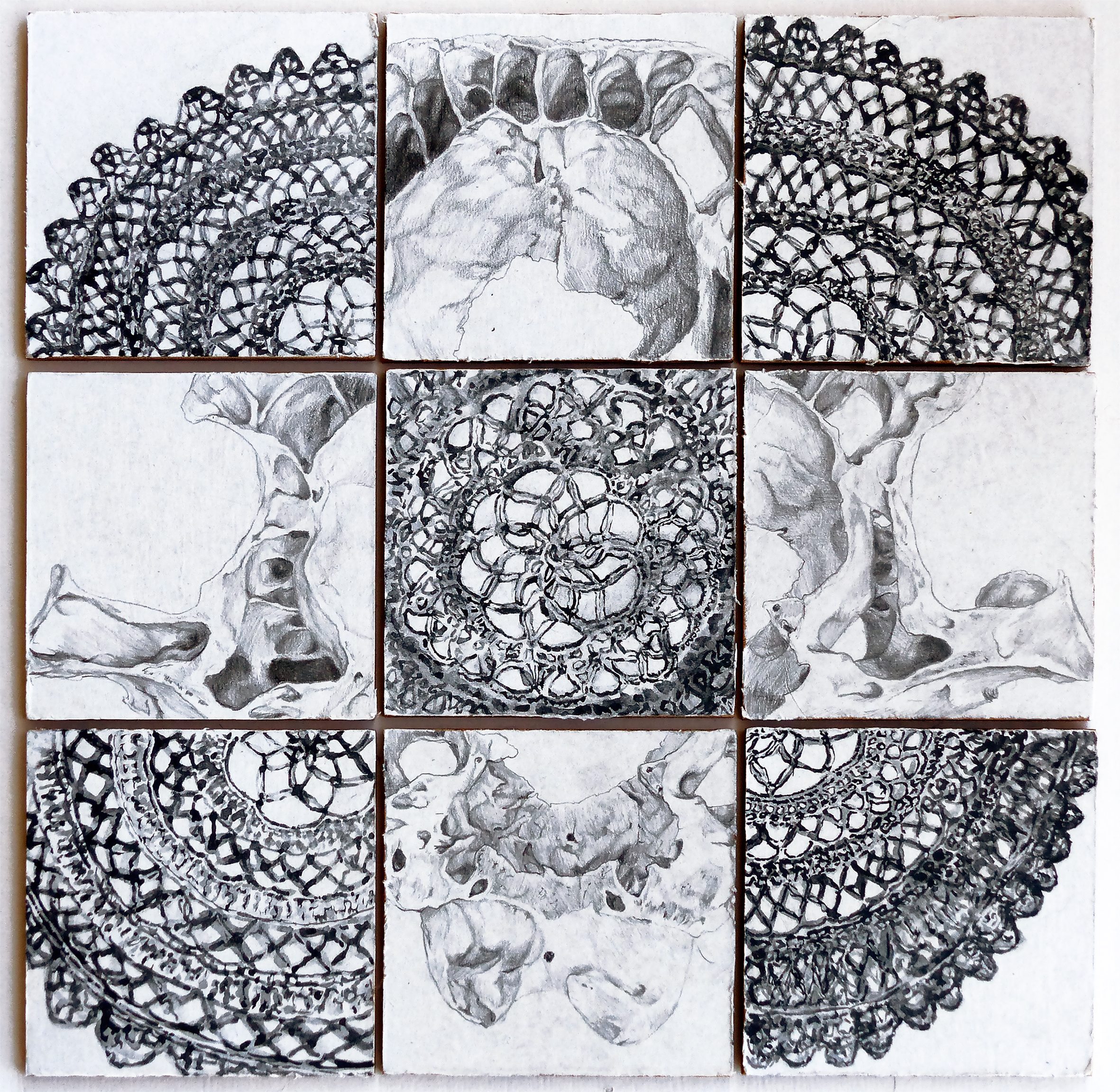 Spirits of my silence - graphite on paper on wooden tiles, 11" x 11", 2016
Spirits of my silence - graphite on paper on wooden tiles, 11" x 11", 2016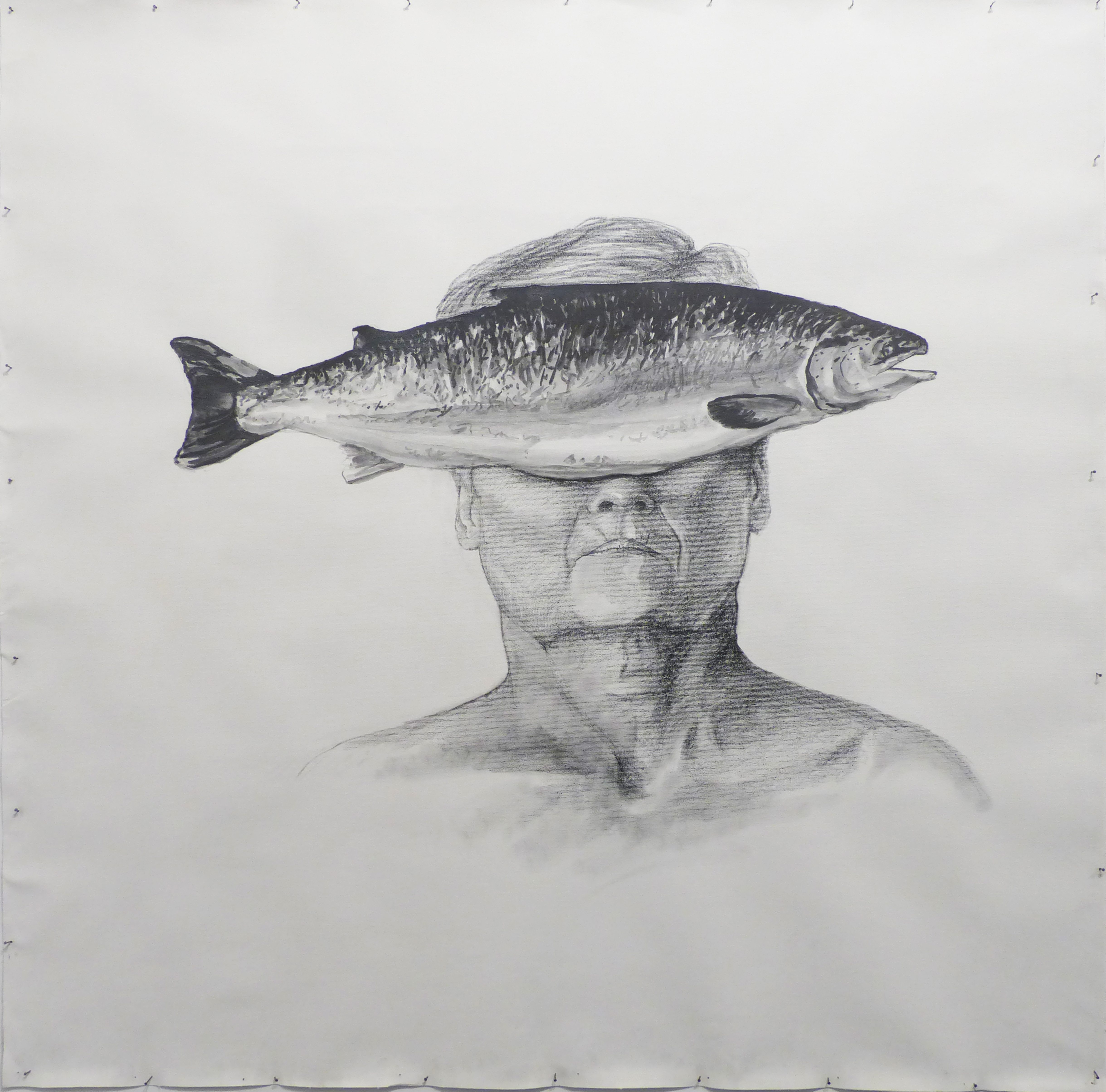 Milda,Graphite on canvas, 39"x39", 2016
Milda,Graphite on canvas, 39"x39", 2016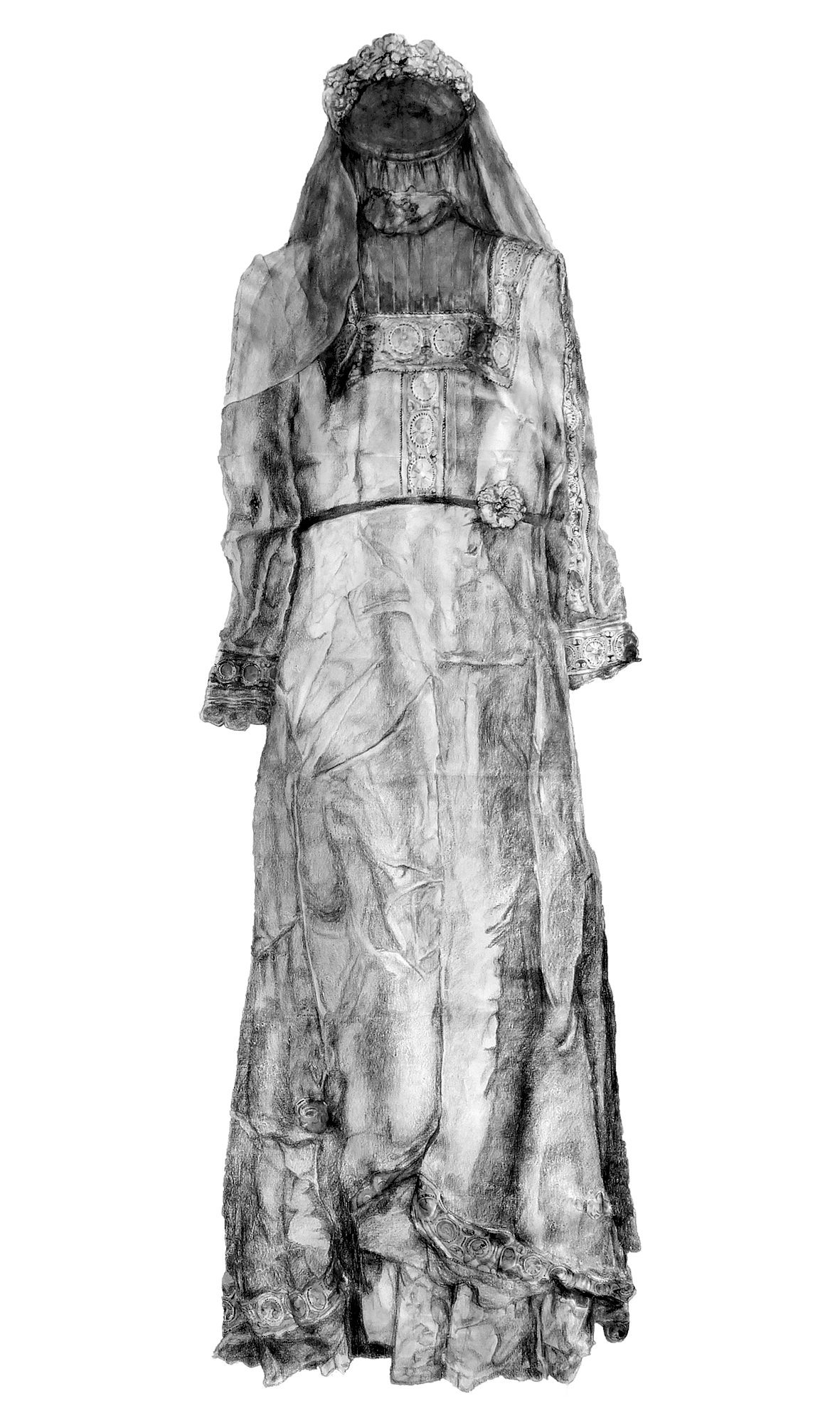 Sposa, graphite on paper, 6,56'x 2,95', 2015
Sposa, graphite on paper, 6,56'x 2,95', 2015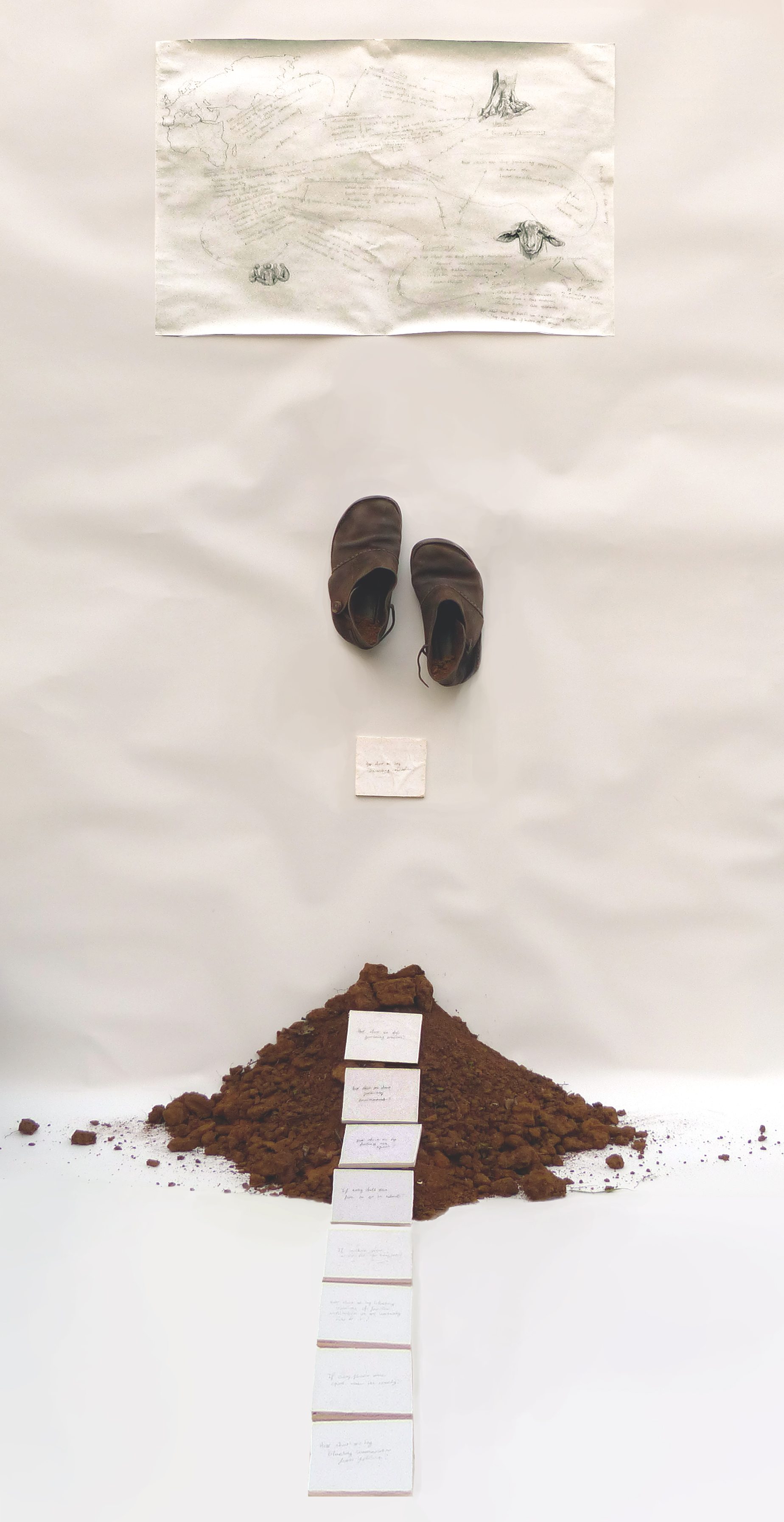 Exercise for a better society, graphite on paper, wood, soil, leather shoes, 85"x31" x35"
Exercise for a better society, graphite on paper, wood, soil, leather shoes, 85"x31" x35"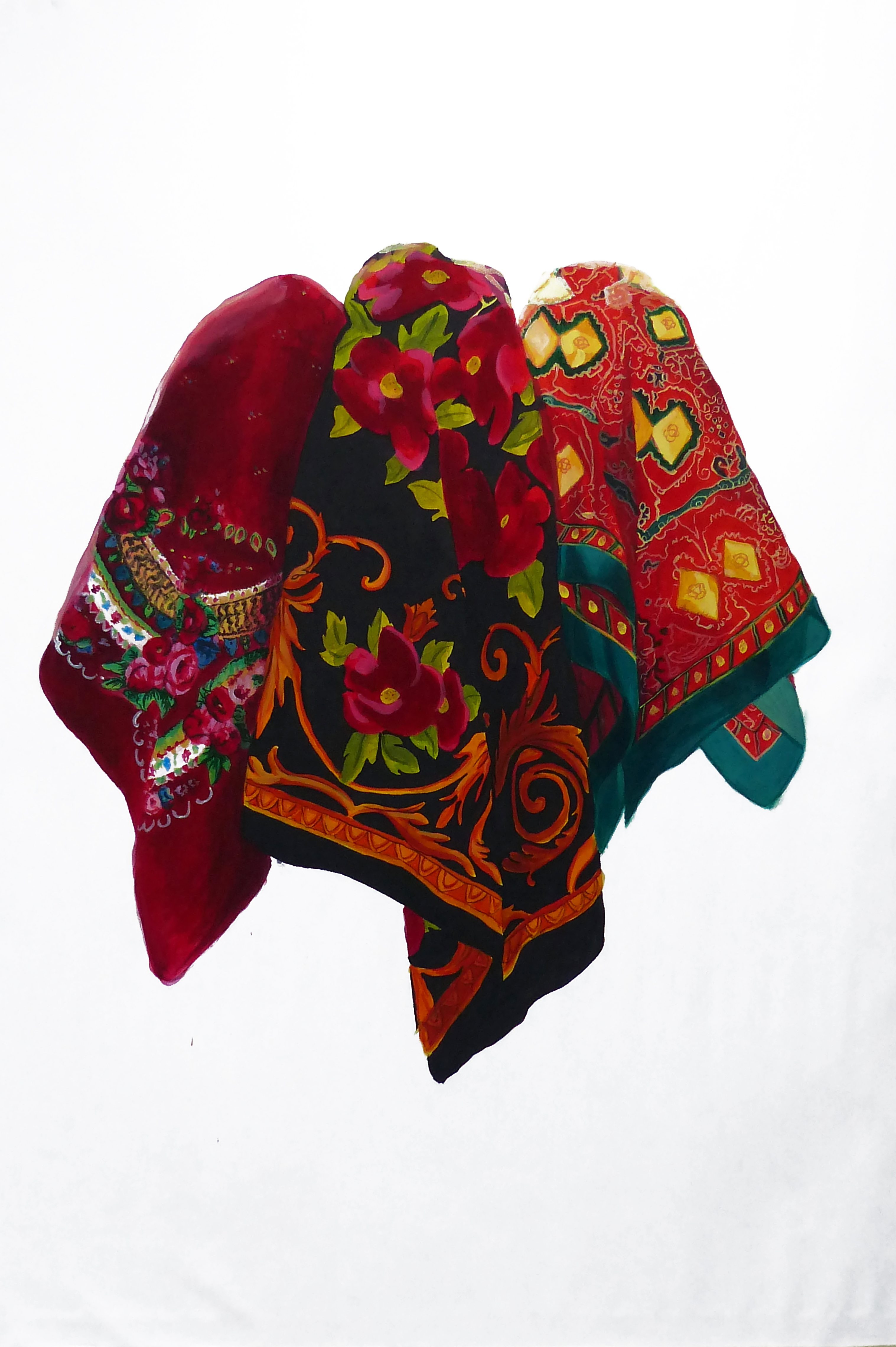 Babajagas chat, acrylics on canvas, 6,56'x 5,24', 2016
Babajagas chat, acrylics on canvas, 6,56'x 5,24', 2016
As Joyce wrote in his novel Portrait of the Artist as a Young Man, the work of the artist should arouse, or should inspire, an aesthetics standstill, an ideal compassion or an ideal terror. That process is produced and dissolved at the end by the beauty rhythm, which is the invisible link created between the artwork and the audience. In connection with Joyce’s belief about aesthetic, I want to create an invisible relationship that may connect viewers with my works through a sensitive and intelligible strong bond, organized by my artistic practice which is based on the issue of memory. When I talk about memory I mean personal memory, as well as memories in relationship with body, for example: where we store up our memories in a philosophical and spiritual context and how we do conserve the feelings related to memories and the memories themselves. Besides, I talk about collective memory which relates to religion and anthropology. By working carefully with an aesthetic process I am interested to highlight my own memory and the collective as well, paying particular attention to that which relates to the folk religion that often originates from pagan culture which is a paradigm for expressing the personal spiritual approach in a primitive context. On my work, this concept is displayed in images representing a ritualism arising from collective memory and folk traditions, which then will be transformed in personal memory inside people in a cyclical way.
From my anthropological studies and my interest about anatomical drawing, I rated the bones as a personal and a historical memories keepers, since every culture has conferred to them a spiritual worth. In fact they are basics in the rituals and venerated in the charnel houses of many religions. During lifetime the bones have the function to absorb our experiences and keep them as images after death. The memories fill our bones which form the skeleton and our identity, in the same way the collective memories give a contribution in the society’s forming process.
Even though I investigate intimately and profoundly about memory, I look at this matter also in a peripheral overview, by depicting drawings of clothes which represent the external part of body in opposition with bones which are the deepest part of it and its support. By portraying what one has left I lay open the desire to keep a person’s presence who actually is gone.
Well-defined images like: dresses, portraits, mythological figures, anatomic parts and bones appear on my works, where in some of those may emerge paper inserts describing everyday-life scenes related to my past or to my ancestors’ memories, or also anatomic parts, or details of objects. My works are containers of stories that the audience does not know but may use like screens from which re-watch its memories.
